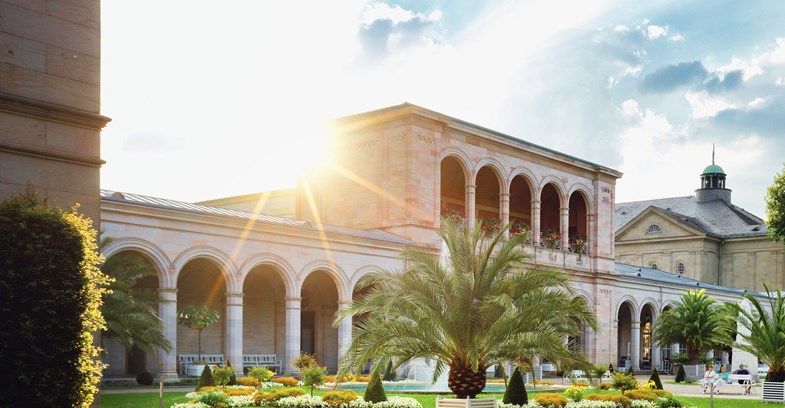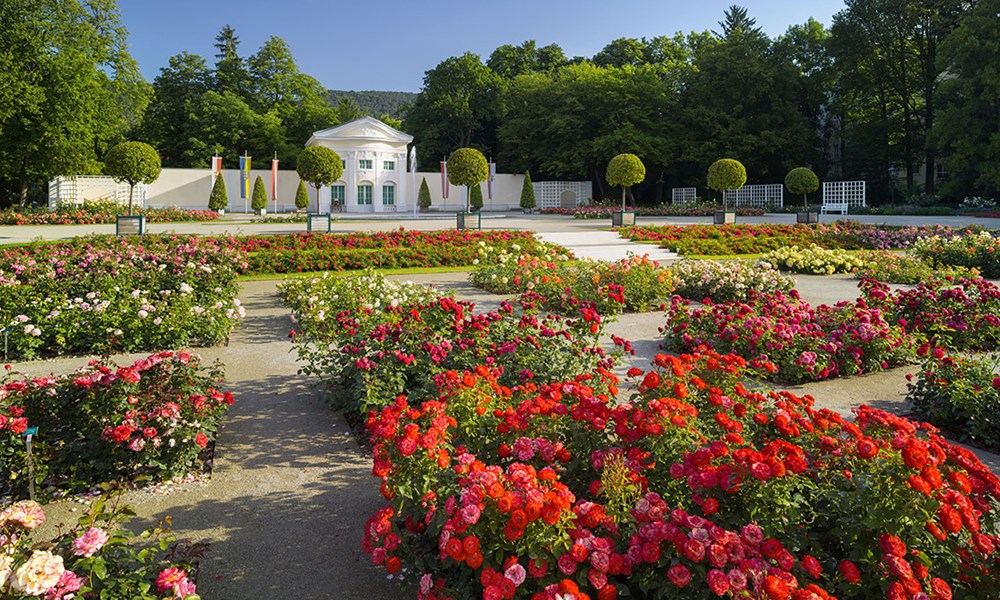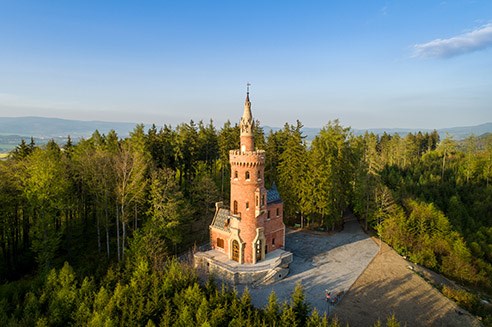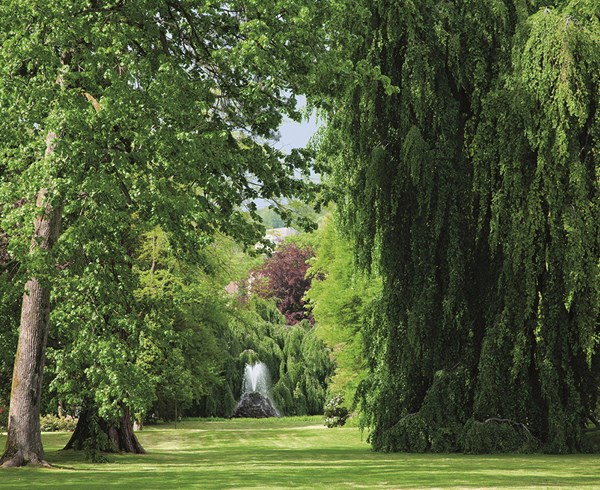Exercise as part of ‘taking the cure’ commonly took the form of strolling along wide gravelled paths in landscape gardens and ‘kurgartens’. Such public gardens within or next to the spa quarter are a prototype in the history of the garden and its function. Spa gardens were designed to be used by others, in large numbers, and for specific purposes. Music was an essential contribution to the cure and near to the promenades are bandstands or similar pavilions from which bands played music throughout the day to visitors. Refreshments were also provided and the restaurants and kiosks can often be seen today.
In many of the spa towns, extensive landscaped gardens may be seen laid out as ‘English Gardens’ – with meandering paths, secluded bowers, seats and occasional small kiosks providing refreshments. These informal landscape settings contrast with public promenades and formal landscape designs.




